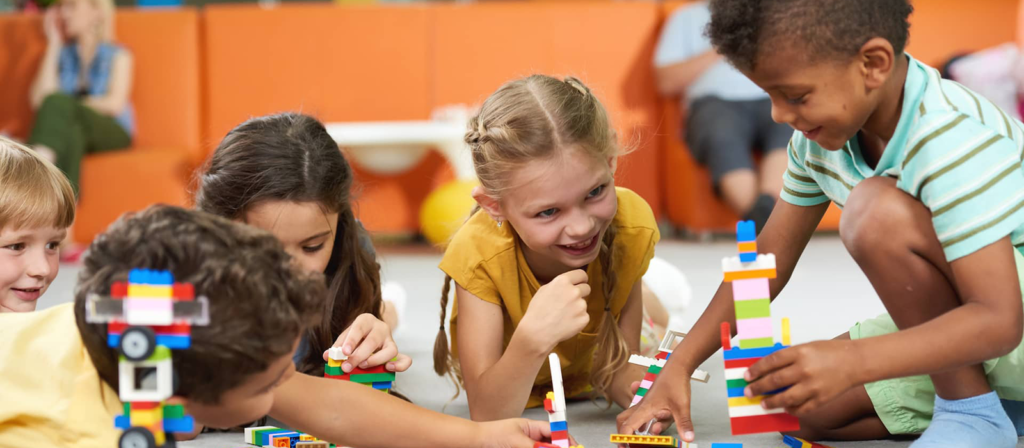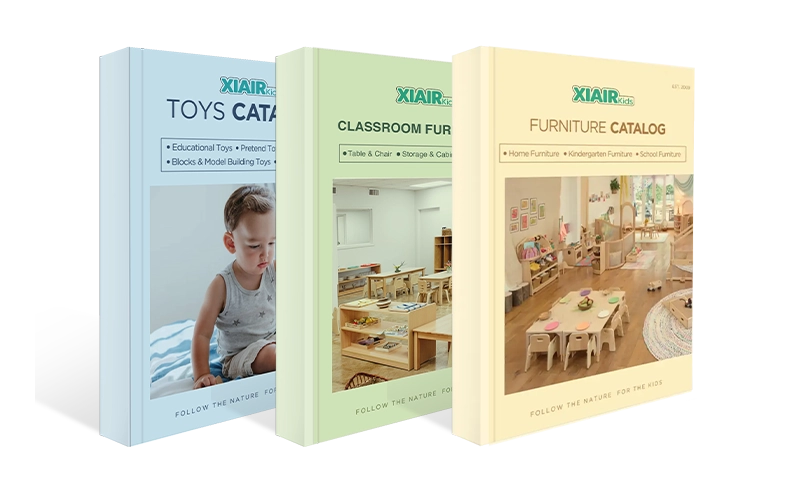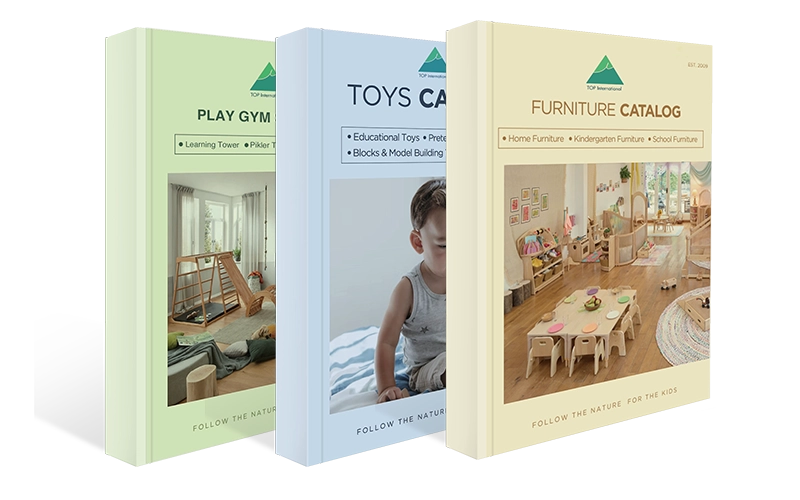Have you ever wondered why some children seem disengaged in traditional classrooms? Are you concerned that rote learning methods could stifle creativity and joy? Do you question whether your approach to early education is truly fostering brain development?
Play Based Learning supports children’s cognitive, social, and emotional growth by encouraging active exploration, creativity, and problem-solving. Research shows that playful learning strengthens brain connections, enhances memory retention, improves emotional regulation, and fosters a lifelong love for learning.
This article will guide you through the science behind Play-Based Learning and how it can transform children’s brain development, giving you actionable insights you can trust.
What is Play Based Learning?
Play-based learning is an educational approach that emerged from the pioneering theories of early childhood experts like Jean Piaget, Lev Vygotsky, and Maria Montessori. These influential figures each recognized that children learn best through direct interaction with their environment, particularly through play. Piaget emphasized the importance of hands-on experiences in cognitive development. At the same time, Vygotsky introduced the concept of social interaction being central to learning, and Montessori advocated for child-centered, exploratory education. Together, their research laid the foundation for what we now define as play-based learning.
At its core, play based learning is a method where children explore, experiment, and engage with their surroundings through structured and unstructured play activities. Rather than sitting passively and absorbing information, children in play based learning environments actively construct knowledge by interacting with people, objects, and ideas in meaningful ways.
To define play-based learning is to recognize that play is not merely recreational; it is the primary medium through which children develop cognitive, physical, social, and emotional skills. Whether they are role-playing, building structures, engaging in storytelling, or solving puzzles, children are constantly learning when they are involved in purposeful play.
Ultimately, the importance of play based learning lies in its ability to nurture the “whole child” — stimulating intellectual growth, fostering emotional intelligence, enhancing social skills, and strengthening physical abilities. It is a philosophy deeply rooted in both historical educational theory and modern neuroscience, making it one of the most potent approaches in early childhood education today.

The Importance of Play-Based Learning and How It Benefits Children
Understanding the importance of play based learning requires looking deeply at how young children’s brains grow. The brain is most flexible between birth and age five, meaning experiences during this window have lifelong effects.
One critical play-based learning advantage is the strengthening of neural connections. Every time a child builds a block tower, navigates a playground obstacle, or negotiates roles in a pretend game, their brain forms critical pathways that enhance memory, self-control, and adaptability.
Benefits of play based learning also extend into literacy and numeracy. Through activities like story creation, sorting games, and building projects, children engage with fundamental academic concepts long before they realize it. This makes kindergarten activities and play based learning ideas crucial for educational readiness.
Instead of conforming to strict instructions, children invent new worlds, solutions, and ideas, developing flexible thinking—an essential skill in a rapidly changing world.
In conclusion, the benefits of play-based learning in kindergarten and beyond are substantial and wide-ranging. It does not simply prepare children for school; it prepares them for life.

Key Components of Play-Based Learning
Creative Exploration
Creative exploration is fundamental to play-based learning. Providing spaces filled with open-ended materials—such as art supplies, building blocks, and costumes—encourages children to think innovatively. In these ideas, children turn a cardboard box into a spaceship, invent new games, or create intricate structures, fostering adaptability and imagination.
By promoting creative risk-taking, children learn perseverance. In failing and trying again, they gain resilience—a key life skill. The process, rather than the product, is emphasized, embodying one of the essential play based learning principles.
Furthermore, symbolic play, where objects represent something else, is a hallmark of early literacy and abstract reasoning. A stick becomes a sword; a blanket, a superhero cape. These experiences enrich cognitive flexibility, supporting future academic achievements.

Fiziksel Gelişim
Physical engagement is deeply woven into play based learning for preschoolers. Children develop balance, coordination, strength, and spatial awareness through active games, obstacle courses, and creative physical tasks.
Gross motor activities like running, jumping, or climbing enhance physical stamina and brain health, while fine motor tasks such as stacking blocks or threading beads build the precision needed for writing and other academic tasks later. Kindergarten classrooms often feature tırmanma yapıları, sensory tables, and manipulatives to foster these skills naturally.
Through these activities, the importance of play based learning becomes even more apparent: it’s not just academic growth but full-body development that prepares children for real-world tasks.

Social and Emotional Growth
Social-emotional development is a pillar of play-based learning in kindergarten environments. Negotiating roles in dramatic play, cooperating to build structures, and resolving conflicts through dialogue are daily opportunities for children to refine interpersonal skills.
Through these interactions, emotional intelligence blooms. Children learn self-regulation, patience, empathy, and resilience—qualities far more predictive of lifelong success than academic scores alone.
Strong social-emotional skills developed through play contribute directly to academic success and personal well-being later in life. Emotional intelligence, conflict resolution, empathy, and teamwork are skills increasingly valued not just in school but in the workplace and society at large.

Child-Centered Approach
At its core, Play Based Learning is child-centered. It respects children’s natural rhythms, interests, and developmental stages, allowing them to take the lead in their learning journeys. Instead of imposing rigid curricula, educators observe children’s play, identify interests, and scaffold learning experiences that extend thinking and exploration.
This approach empowers children, giving them a sense of autonomy and competence. It acknowledges that each child is unique and that meaningful learning happens when activities are relevant and engaging to the learner.
Child-centered environments are flexible, welcoming, and filled with materials that inspire inquiry and creativity. The educator’s role is to create opportunities, pose thoughtful questions, and offer support while honoring the child’s agency.


Receive a free catalog and custom layout to help you design your ideal classroom easily.
Theory: The Foundation of Early Education
Based Learning theory is anchored in constructivist views of education, particularly the work of theorists like Jean Piaget, Lev Vygotsky, and Maria Montessori. These pioneers believed that children build knowledge actively rather than passively absorbing information.
Jean Piaget emphasized stages of cognitive development and the idea that children learn best through doing and experiencing. Lev Vygotsky introduced the concept of the Zone of Proximal Development, where learning occurs best with appropriate support during slightly challenging tasks. Maria Montessori highlighted the importance of hands-on, child-directed learning environments.
Contemporary neuroscience backs up these theories. Brain imaging shows that playful, emotionally engaging experiences strengthen neural connections far more effectively than passive learning. Synaptic growth—the formation of connections between brain cells—occurs rapidly during active exploration and social interaction.
In short, Play Based Learning is not just “fun”—it is biologically optimal for young minds. It builds the cognitive, emotional, and social architecture necessary for lifelong learning and success.
By incorporating Play Based Learning into early education, we align teaching practices with how the brain develops, providing children with the strongest possible foundation for future academic, personal, and professional achievements.

Are There Any Challenges to Implementing Play-Based Learning?
While the benefits of play-based learning are well-documented and widely supported by research and early childhood education frameworks, practical implementation is not without its difficulties. Adopting this approach often requires a cultural, logistical, and pedagogical shift. Understanding and addressing the potential challenges of implementing in early childhood education can help educators and institutions create more sustainable and prosperous learning environments.
Resistance to Change
One of the primary barriers to implementing play-based learning is institutional or individual resistance to change. Traditional educational systems are deeply rooted in direct instruction, standardized testing, and structured routines. Shifting to a more open-ended, child-centered model often raises skepticism among educators, administrators, and even policymakers.
Educators may worry that activities lack academic rigor or fail to meet learning outcomes. Without a proper understanding of the play-based learning theory, they may see play as an unproductive or “free-time” activity. This mindset, often reinforced by outdated training or rigid standards, can limit innovation and reduce the likelihood of adoption.
Overcoming this resistance requires leadership support, professional learning, and showcasing evidence that demonstrates the importance. Research-based case studies, classroom observations, and training on play based learning principles can shift perceptions and build confidence in this method.

Training and Resources
Successful implementation is highly dependent on the capacity of educators to plan, observe, and extend child-initiated play into meaningful learning opportunities. This requires both specialized training and continuous professional development.
Unfortunately, many teacher preparation programs still lack comprehensive modules on philosophy, child-led inquiry, and observation-based assessment. As a result, educators may enter the classroom unprepared to facilitate play based learning activities effectively or to create rich, interactive environments.
Moreover, resource limitations are common, especially in underfunded settings. High-quality play based learning toys, open-ended materials, and child-friendly environments are vital. Institutions need to invest not only in physical materials but also in time for planning, collaboration, and reflective practices among educators.
Access to updated literature, tools, and collaboration networks can support ongoing professional development, empowering educators to adapt and innovate within their contexts.

Balancing Curriculum Requirements
Another challenge lies in aligning play based learning with mandated curriculum requirements. Educators often feel pressure to deliver outcomes tied to literacy, numeracy, and standardized assessments, particularly in settings that serve as feeders into formal schooling systems.
Advantages include embedded academic development, but the outcomes are not always immediately visible or easy to quantify. For instance, a child engaging in role-play might be practicing narrative skills, emotional regulation, and mathematics all at once, but these may not translate into measurable results on a conventional test.
The solution lies in integrating curriculum goals into examples. For instance, a teacher can plan a shopping role-play scenario that meets objectives in counting, money management, and vocabulary development. Assessment strategies should also shift to include documentation, portfolios, and observation logs, allowing educators to capture progress without disrupting the play experience.

Receive a free catalog and custom layout to help you design your ideal classroom easily.
Space and Environment
A well-designed space is fundamental, but many early education centers face limitations related to classroom size, layout, or furniture. Small, crowded spaces can make it challenging to organize multiple activity zones or allow children to move freely, which can restrict the richness of their engagement.
Creating a strong play-based learning environment involves more than placing toys in a room. It requires intentional design: quiet corners, construction areas, sensory spaces, reading nooks, and collaborative tables. Materials should be accessible and organized to promote independence.
Outdoor space is equally important. Many learning opportunities central to play-based learning, like physical development, environmental science, and risk-taking, are best experienced outside. Yet some schools lack access to quality outdoor areas or fail to use them as extensions of the classroom.
Schools must prioritize spatial flexibility, both indoors and outdoors, to ensure the environment supports, not hinders, play-based learning principles.

Parental Expectations
Parents may not immediately understand or accept play-based learning, especially if their own schooling experiences were traditionally structured. Some equate learning with worksheets, homework, and repetition, and worry that “just playing” will not prepare their children for academic success.
Clear communication and transparency are essential. Teachers should share the philosophy, explain its alignment with child development, and show concrete examples of how literacy, math, and social skills are built through play.
Hosting parent workshops, showcasing classroom documentation, and inviting families to observe play based learning activities in action can build trust. When parents see children thinking critically, cooperating, and solving real-world problems through play, their concerns are often replaced by enthusiasm.
Building a strong partnership with families strengthens the educational ecosystem and ensures children receive consistent support at school and at home.
Time Management
Time is a finite and highly contested resource in early years education. With tight schedules and multiple demands — from snack time to hygiene routines and structured learning — carving out extended blocks for uninterrupted play can be difficult.
Yet thrives on depth, reflection, and sustained engagement. When play is constantly interrupted or squeezed into short intervals, children cannot fully immerse themselves in meaningful exploration.
Administrators must prioritize time for play based learning activities, reevaluating daily schedules to ensure play is central rather than peripheral. This may involve integrating play into traditional subjects, lengthening block periods, or rethinking transitions to minimize disruptions.
Empowering educators to manage time with intention, while still achieving curriculum goals, is a cornerstone of successful implementation.

Types of Games in Play-Based Learning
Games in play-based learning range from cooperative board games to imaginative role-play and physical outdoor challenges. Each type supports different developmental skills, including problem-solving, social interaction, and emotional regulation. When chosen intentionally, games can also reinforce academic concepts such as counting, vocabulary, and pattern recognition—all while keeping children fully engaged.
Serbest Oyun
Free play is child-initiated and self-directed, allowing children full control over their choices and actions. It encourages creativity, independence, and decision-making without adult interference, forming the foundation of intrinsic motivation and exploratory learning.
- Bloklarla İnşa Etmek
- Taklit Oyunu
- Sand and Water Play
- Art and Craft
- Outdoor Exploration
- Musical Play
Guided Play
Guided play combines child-led exploration with subtle adult support. Educators or caregivers introduce materials or ask questions to deepen engagement, helping children connect play experiences with targeted learning outcomes while preserving autonomy.
- Building Challenges
- Sorting and Matching Games
- Cooking Play
- Memory Games
- Board Games and Puzzles
- Doğa Hazine Avı
- Group Storytelling
What Are Some Examples of Play-Based Learning Activities?
At its core, play based learning is about meaningful, child-driven engagement. But what does this look like in practice? A wide array of activities can embody principles, from pretend play to group collaboration, offering diverse entry points for every child to engage in inquiry, creativity, and discovery.
Role-Playing and Dramatic Play
Role-playing scenarios—like running a bakery, pretending to be doctors, or managing a fire station—are some of the most powerful play based learning activities. In these experiences, children exercise their imaginations, negotiate social roles, solve problems, and integrate academic concepts into real-world simulations.
A pretend restaurant, for instance, might include writing menus (literacy), setting prices (math), and resolving customer service issues (social-emotional skills). Teachers can extend learning by introducing new vocabulary or tools while allowing children to drive the scenario’s direction.

Art and Craft Activities
Art fosters self-expression and fine motor development while supporting the philosophy of exploration over perfection. Activities like drawing, painting, and collage encourage children to communicate their ideas visually.
Teachers can integrate themes—seasons, animals, emotions—while allowing each child’s interpretation to shine. This balance of structure and freedom is at the heart of the play based learning philosophy.

Açık Hava Oyunu
Outdoor settings naturally promote play based learning benefits. Children engage in physical challenges, scientific observation, and social cooperation while immersed in a dynamic, sensory-rich environment.
Activities such as building with sticks, water play, or nature scavenger hunts encourage curiosity and resilience. Unstructured time outside allows children to follow their instincts, form connections with nature, and build physical confidence — essential aspects of play based learning in early childhood education.

Storytelling and Puppet Shows
Language, imagination, and social interaction come together in storytelling and puppetry. These activities encourage children to craft narratives, expand vocabulary, and explore emotions and perspectives.
Educators can guide storytelling sessions or let children invent their own, often revealing themes or interests that can be used to extend learning. Storytelling supports early literacy while reinforcing the advantages of play based learning in building communication skills.

Music and Dance
Music and movement provide joyful, embodied ways for children to express themselves. Clapping rhythms, dancing to songs, or exploring instruments stimulates auditory discrimination, coordination, and pattern recognition.
Incorporating music into play based learning preschool settings not only supports cognitive development but also enhances emotional expression and group cohesion.

Duyusal Oyun
Engaging the senses is crucial during early development. Sensory bins, water tables, or tactile materials help children explore texture, temperature, sound, and movement.
Such experiences are foundational for neural development and support self-regulation. Sensory play aligns with play based learning activities that center on exploration, comfort, and connection with the physical world.


Group Projects
Collaborative projects teach cooperation, planning, and communication. Whether building a cardboard city or organizing a class performance, group work develops executive function and social-emotional skills.
These projects reflect the play based learning definition, where creativity, inquiry, and collaboration intersect in meaningful experiences that mirror real-life challenges.

Implementing Play Based Learning at Home
Doesn’t have to be limited to classrooms. The home is an ideal environment for encouraging meaningful, playful experiences that support brain development and early education. When parents and caregivers understand how to implement at home, they create opportunities for their children to build foundational skills in literacy, numeracy, social-emotional development, and critical thinking.
Establishing a play-based learning environment at home doesn’t require expensive toys or complicated setups. What matters most is offering the right balance of freedom, support, and materials that allow children to explore their world, solve problems, and express their creativity.
Everyday routines and family activities can become meaningful educational experiences when approached with the right mindset. Emphasizing flexibility, encouragement, and curiosity over rigid structure fosters a learning culture that aligns seamlessly with the play based learning philosophy.
Create a Learning Environment
A supportive play based learning environment at home begins with intentional space design. Even in small homes, dedicating a corner where children can freely engage with different materials fosters exploration. This area should be rich in play based learning toys, such as blocks, puzzles, pretend kitchen sets, dress-up clothes, and sensory materials like sand, clay, or water.
Rotating toys and materials periodically keeps interest high and allows for the development of different skills. Providing open-ended materials—items that can be used in multiple ways—encourages creativity and critical thinking, two significant benefits.
Organization also plays a role. Materials should be accessible to children, allowing them to initiate activities independently. Rotating toys and supplies regularly keeps the environment fresh and sparks new interests. Natural elements like plants, stones, or sand trays further enhance sensory experiences crucial for cognitive and emotional growth.
Accessibility is key. Children should be able to reach and choose their materials, promoting autonomy and decision-making. This supports the philosophy that values self-directed exploration and active engagement over passive instruction.

Açık Hava Oyununu Teşvik Edin
Outdoor environments naturally stimulate play based learning principles by offering opportunities for gross motor development, scientific exploration, and social collaboration. Gardens, parks, backyards, or even simple walks around the neighborhood can become dynamic classrooms for young learners.
In outdoor settings, children develop physical coordination, balance, and strength by climbing trees, running, or hopping between rocks. They also observe nature’s systems firsthand, fostering early scientific thinking. Observing a line of ants, tracking the growth of a plant, or feeling different textures of leaves creates memorable experiences that integrate sensory and cognitive learning.
Outdoor activities can also promote problem-solving and creativity. Building forts with sticks, creating obstacle courses, or engaging in role-play scenarios outside combines physical and imaginative skills in rich ways.
Most importantly, outdoor play promotes resilience, risk assessment, and independence—key attributes for lifelong success.

Integrate Learning in Daily Activities
One of the most effective ways to practice play based learning at home is by integrating learning into everyday routines. Young children are naturally curious about the world around them, and even mundane activities offer rich opportunities for engagement.
Cooking together, for example, introduces basic math concepts such as counting, measuring, and fractions. Children learn sequencing by following a recipe, and scientific thinking emerges as they observe how ingredients change when heated or mixed.
Shopping can become lessons in literacy and numeracy. Children can help create a shopping list, recognize words and numbers on signs, and count items as they are placed into the cart.
Involving children in errands, gardening, or even planning family outings can support play based learning for preschoolers by teaching organization, responsibility, and problem-solving within authentic contexts.
By viewing daily life through a lens, parents and caregivers transform ordinary moments into extraordinary learning experiences without the need for formal instruction.
Foster Creativity
Fostering creativity is central to play based learning for preschoolers. At home, creativity thrives when children have time, space, and freedom to explore materials without predetermined outcomes. Art supplies, musical instruments, building blocks, costume boxes, and recycled materials provide the tools for imaginative play.
Parents should encourage exploration by asking open-ended questions such as “What else could you make with that?” or “How would you tell that story differently?” instead of praising only the final product. This shifts the focus from results to the process of discovery, a key aspect of play based learning theory.
Creative play builds cognitive flexibility, emotional expression, and problem-solving skills, laying the foundation for future innovation and adaptability. By fostering an innovative mindset, parents support children’s ability to innovate and think divergently—qualities that underpin success in all areas of life.

Read Together
Reading with children remains one of the most powerful play based learning activities. Interactive reading sessions can include acting out stories, predicting what happens next, or creating alternate endings. This active engagement with texts strengthens literacy skills while also promoting imagination and critical thinking.
Choosing books that align with children’s interests encourages deeper involvement and discussion. Story-based role play, where children act out characters or invent new ones, blends reading with creative and social development. Rather than limiting reading to traditional storybooks, parents can introduce interactive experiences: puppet shows, dramatic retellings, or even creating homemade books. Discuss stories, predict endings, and encourage children to relate narratives to their own lives, enhancing deeper understanding.
Reading together also nurtures emotional bonds and teaches empathy. This approach not only prepares children academically but also nurtures a lifelong love of reading, an essential goal of stimulating play-based starting points for reading.

Play Games
Games offer natural, joyful contexts for learning. Board games, card games, and physical games like scavenger hunts or “Simon Says” promote social interaction, memory, strategy, math skills, and language development. Board games develop patience, rule-following, planning, and numeracy, making them an excellent extension of play-based learning kindergarten activities.
More importantly, inventing games stimulates creativity and negotiation skills. Allowing children to create rules, design playing fields, or adjust existing games to new contexts deepens engagement and learning.
Games provide a low-stakes environment where children can practice persistence, emotional regulation, and cooperative behavior—foundations of healthy social development.

Involve Household Chores
Though often overlooked, involving children in household chores aligns perfectly with the play based learning advantages framework. Daily responsibilities such as setting the table, sorting laundry, or organizing groceries offer opportunities to practice counting, categorization, sequencing, and problem-solving.
Turning chores into playful challenges—timing how quickly toys can be picked up, or singing a song while cleaning—makes them engaging and reinforces the importance of play based learning in everyday life.
Moreover, chores cultivate responsibility, independence, and a sense of contribution to the family unit. When presented positively, these activities strengthen executive function skills and self-efficacy.

Stimulating Play-Based Starting Points for Reading, Writing, and Mathematics
Incorporating foundational academic skills into it does not require formal lessons or worksheets. Instead, everyday experiences provide authentic, engaging contexts where children can develop literacy and numeracy in natural, meaningful ways.
By weaving reading, writing, and mathematics into play, educators and parents ensure that learning is driven by interest, relevance, and joy rather than obligation. This aligns with the best practices recommended by experts in play based learning in early childhood education.
Reading
In preschool settings, early reading skills often emerge through storytelling, pretend play, and environmental print awareness. At home, parents can encourage reading readiness by labeling everyday objects, creating “word scavenger hunts,” or making homemade books.
Role-playing bookstores, libraries, or news reporters adds another layer of authenticity and excitement to literacy development. Children naturally integrate sight word recognition, narrative structure, and vocabulary building during these playful experiences.
Creating a cozy reading nook stocked with books, puppets, and props encourages both independent and collaborative story exploration. Here, toys like felt storyboards and alphabet blocks become tools for literacy enrichment.
Through these playful approaches, children experience the benefits of play based learning as they associate reading with fun, discovery, and connection. Additionally, role-playing activities, where children assume characters and narrate scenarios, offer rich opportunities for developing oral language skills, a critical precursor to formal reading and writing.
Yazma
Writing emerges naturally when children are provided with meaningful reasons to write. Early writing development should emerge from meaningful, child-centered experiences. Instead of dictating exercises, encourage children to write birthday cards, shopping lists, treasure maps, or secret codes.
Parents can set up “writing stations” at home with supplies like paper, markers, stickers, and envelopes. Prompting children to write shopping lists, secret messages, or invitations for family events makes writing feel purposeful and exciting.
Encouraging invented spelling (where children sound out words themselves) builds phonetic awareness and confidence. Over time, these playful writing experiences support formal writing instruction without the stress often associated with early literacy tasks.
Through these activities, children practice phonetic spelling, develop hand-eye coordination, and internalize the structure and purpose of written language—all while engaged in creative, self-directed endeavors.
Matematik
Mathematical thinking in young children is best nurtured through play, not worksheets. Everyday experiences like cooking, building, sorting toys, and shopping offer rich contexts for developing math skills.
Playing “store” with pretend money introduces counting, addition, and subtraction. Building with blocks teaches spatial reasoning, measurement, and balance. Games like “treasure hunts” can involve counting steps, estimating distances, and recognizing patterns.
Incorporating puzzles, measuring activities, or sequencing tasks at home aligns with play based learning principles while laying a solid foundation for future math success.
Through these natural, joyful experiences, children begin to see math not as abstract symbols but as valuable tools for understanding and interacting with their world, capturing one of the most significant advantages of play-based learning.

Receive a free catalog and custom layout to help you design your ideal classroom easily.
Common Misconceptions About Play-Based Learning in Early Years
Play based learning has become widely recognized as one of the most effective approaches for fostering holistic development in young children. However, despite growing support from educational research, many misconceptions still surround the practice. These misunderstandings can cause hesitation among educators, parents, and policymakers when considering environments for young learners.
Recognizing the importance of play-based learning helps dismantle false beliefs and promotes an environment where every child can thrive.
‘There is no role for early years practitioners in child-initiated play and play-based learning.’
One of the most persistent myths is that educators become irrelevant in a child-initiated play-based learning environment. Some argue that children, left to their own devices, will play aimlessly without achieving developmental milestones. This misunderstanding overlooks the crucial role of early years practitioners as facilitators, observers, and intentional planners.
In reality, skilled educators create rich environments, scaffold experiences, and gently guide children toward deeper learning. Through careful observation, practitioners identify opportunities to introduce new vocabulary, pose open-ended questions, and extend a child’s thinking. This dynamic involvement aligns perfectly with the best practices outlined in play based learning professional development programs.
Practitioners are not passive onlookers; they are active participants in nurturing children’s inquiry, ensuring that activities remain purposeful and connected to developmental goals. Their presence ensures that play-based learning benefits extend beyond entertainment to substantial, meaningful growth.
‘Young children come into early years settings with many different needs. It is not possible to meet each child’s individual needs using play-based learning.’
Another common misconception is that play based learning cannot address the diverse range of needs that young children present.
However, a well-executed environment is, by nature, highly adaptable and individualized. Play allows each child to engage at their own pace, based on their interests, strengths, and areas for growth. For example, while one child practices fine motor skills by threading beads, another may be developing narrative skills through dramatic play.
Furthermore, open-ended materials and flexible activities naturally support differentiation. Educators can easily adjust the complexity of tasks or introduce specific prompts to meet particular developmental goals.
Rather than forcing every child into a one-size-fits-all model, it embraces differentiation, making it exceptionally practical for inclusive classrooms and diverse learning profiles. Effective use of philosophy ensures that inclusion, equity, and personalized learning are at the forefront of early education practice.
‘If I follow a child-initiated, play-based learning approach, the children will misbehave and it will be chaos.’
Many educators worry that giving children autonomy through play based learning activities will lead to disorder. The fear is that child-led environments are unruly and lack the structure needed for serious learning.
However, structured chaos is very different from absolute chaos. In a high-quality play based learning environment, children are deeply engaged, purposeful, and respectful.
Because they are genuinely interested in what they are doing, they require less external discipline and more internal regulation.
Experienced educators establish clear expectations and respectful routines that support positive behavior. Children understand boundaries not through rigid control but through natural consequences and guided reflection.
Studies show that play based learning environments often result in fewer behavior problems than traditional models. When children are empowered, respected, and invested in their activities, they exhibit greater self-control and cooperation.
Thus, a well-managed play based learning preschool does not breed chaos; it nurtures responsible, independent learners who thrive on trust and freedom.
‘Learning happens in a classroom. Outdoor play is just for fun.’
Another widely held misconception is the belief that learning is confined to indoor classroom spaces, while outdoor time is simply recreational. This false dichotomy undermines the profound educational value of outdoor play.
Outdoor environments provide unparalleled opportunities for sensory exploration, gross motor development, problem-solving, and scientific inquiry. Concepts like gravity, balance, weather patterns, and ecosystems are best experienced firsthand. Many play based learning examples stem directly from nature-based activities.
Implementing outdoor learning aligns seamlessly with the play based learning theory, emphasizing holistic development. Nature challenges children’s bodies, stimulates their minds, and nurtures their spirits.
Therefore, outdoor play is not just a supplement; it is a vital component of the play based learning philosophy, offering powerful experiential learning opportunities. Rather than viewing outdoor play as “just fun,” educators and parents should recognize it as an essential extension of the importance of play based learning—a dynamic, multisensory classroom without walls.

Influential Theorists and Their Contributions
The evolution of play-based learning owes much to visionary educators and theorists who recognized the power of child-led exploration long before it became mainstream. Their contributions have shaped modern practices in play based learning in early childhood education, emphasizing holistic, respectful, and responsive approaches.
Rudolf Steiner
Rudolf Steiner, founder of the Waldorf education philosophy, emphasized imagination, creativity, and experiential learning. Steiner believed that early childhood should be a time of rich sensory engagement, play, and storytelling, laying the foundation for intellectual development later.
In Waldorf classrooms, the learning environment is carefully curated to inspire wonder and free, imaginative play. Steiner’s emphasis on nurturing the whole child—head, heart, and hands—directly aligns with modern play based learning principles that value emotional, physical, and cognitive development equally.
John Dewey
John Dewey, a towering figure in progressive education, championed the idea that learning is most effective when it is active, meaningful, and connected to real-world experiences. Dewey argued that education should be grounded in the interests and experiences of the child, not in rote memorization.
His advocacy for experiential learning underpins today’s play based learning philosophy. Dewey’s vision of democratic, inquiry-based education resonates strongly with the child-centred approaches used in play based learning preschool and kindergarten programs.
Friedrich Froebel
Friedrich Froebel, often called the father of kindergarten, introduced the idea that structured play is crucial for child development.
He created a series of educational toys known as Froebel’s “gifts,” which were designed to help children explore concepts of form, space, and relationships through hands-on activities.
Froebel’s pioneering vision laid the groundwork for play based learning toys and the developmentally appropriate activities used in play-based learning preschool programs today.
Jean Piaget
Jean Piaget’s research on cognitive development provided essential insights into how children learn through interaction and play.
His theory of developmental stages showed that children construct knowledge actively by manipulating their environment, rather than passively receiving information.
Piaget’s influence on play based learning theory is profound, emphasizing the critical role of discovery, experimentation, and active learning processes in cognitive growth.
Reggio Emilia
The Reggio Emilia approach, developed in post-war Italy, views children as strong, capable, and full of potential. Central to the philosophy is the idea that learning emerges through exploration, collaboration, and relationship-building.
In Reggio-inspired environments, children’s interests guide curriculum development, and documentation of learning processes is highly valued. This child-centered, emergent curriculum mirrors the ideals of play based learning environment design and highlights the critical role of the learning space as the “third teacher.”

Receive a free catalog and custom layout to help you design your ideal classroom easily.
Play-Based Learning vs Traditional Learning
A straightforward comparison between play based learning and traditional education highlights the philosophical and practical differences in early childhood settings.
| Bakış açısı | Oyun Tabanlı Öğrenme | Traditional Learning |
|---|---|---|
| Approach | Child-initiated, inquiry-based | Teacher-directed, instruction-focused |
| Çevre | Flexible, open-ended, sensory-rich | Structured, fixed seating, limited sensory input |
| Role of Teacher | Facilitator, observer, guide | Authority figure, primary knowledge-giver |
| Learning Style | Experiential, hands-on, collaborative | Passive, rote memorization |
| Odak | Process-oriented, holistic development | Product-oriented, academic achievement |
| Değerlendirme | Observational, formative assessments | Formal testing, summative assessments |
| Esneklik | Low adherence to a predetermined curriculum | Low, adherence to a predetermined curriculum |
| Duygusal Gelişim | Integral, nurtures empathy and self-regulation | Secondary, often overlooked |
| Academic Skills Acquisition | Integrated through meaningful experiences | Segregated into subject-specific instruction |
| Creativity and Innovation | Encouraged and celebrated | Highly responsive to children’s interests |
SSS
1. Is play-based learning only suitable for preschoolers?
No. While ideal for early years, play-based methods can extend into primary education through projects, collaborative tasks, and hands-on learning that support more profound understanding.
2. Can play-based learning support language development in bilingual children?
Yes. Interactive play creates natural opportunities to use and hear multiple languages, helping children develop vocabulary and confidence in real-life contexts.
3. How does play-based learning help with school readiness?
It builds social skills, problem-solving, focus, and emotional control—foundations children need to thrive in more structured academic environments.
4. How is progress assessed in play-based learning without formal tests?
Educators use observation, photos, and learning stories to track growth. These methods highlight how children think, explore, and apply knowledge.
5. What skills do teachers need for play-based learning?
They must observe well, guide without directing, and adapt to each child’s needs. The role shifts from instructor to facilitator of discovery.
6. Can small or urban classrooms support play-based learning?
Yes. With flexible spaces and creative material use, even compact environments can offer rich, meaningful play experiences.
7. How can schools start adopting play-based learning?
Begin with training, small pilot areas, and clear parent communication. Gradual integration shows value without overwhelming staff or structure.
Çözüm
Play-based learning is not a trend—it’s a developmentally grounded, research-backed approach that supports the whole child. From fostering creativity and critical thinking to building emotional intelligence and academic readiness, it offers a dynamic alternative to rigid traditional models. While implementation comes with challenges—space, training, curriculum balance—the benefits far outweigh the barriers. With the proper guidance, materials, and mindset, educators and parents can create environments where children thrive through purposeful, joyful play.







